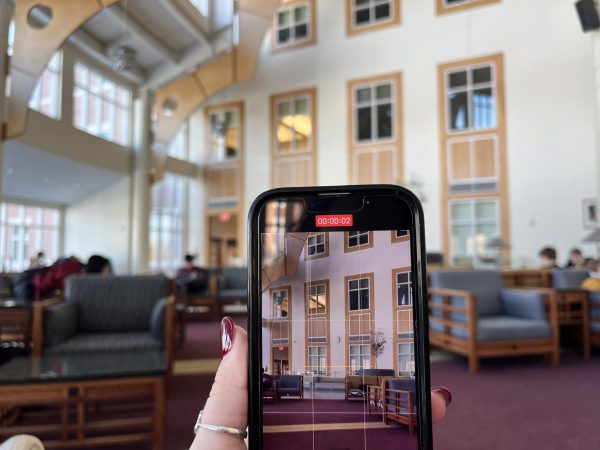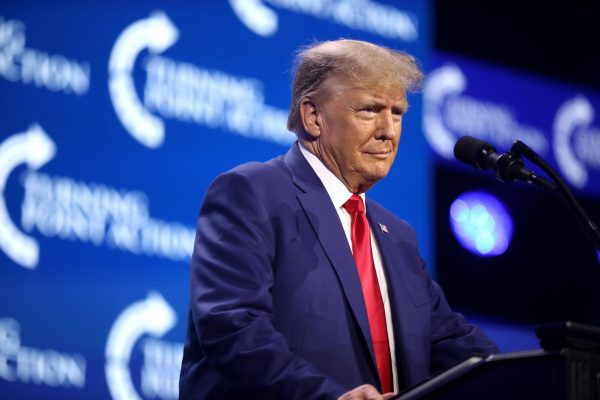Social Commentary at The Met Gala
Because I regard myself as both a pillar of campus fashion and a judgemental political mind, I am very well suited to the task of evaluating ideologically inspired looks from the Met Gala. And if you’ve ever seen me in a t-shirt covered in birds or an oversized sweatshirt covered in bleach stains…no you didn’t.
The Met Gala is an annual fundraiser for the Metropolitan Museum of Art’s Costume Institute. Symbols of wealth – ranging from Instagram and Youtube to Formula 1 Driver Lewis Hamilton – all had tables at the event on Monday, Sept. 13. The cost of a seat is reported to be $30,000 or $35,000. As the high costs indicate, this event is mostly for the very rich and very famous, and has even been referred to as “fashion’s biggest night out.”
The theme this year was “In America: A Lexicon of Fashion.” Some guests seem to have read this as “In America: Corny Political Messaging.”
One of the most talked about looks of the night was Representative Alexandria Ocasio Cortez’s “tax the rich” dress, designed by Aurora James. It was a white off-the-shoulder ball gown with the words “tax the rich” written across the back in large red lettering. This look was all over my Twitter feed the day after the gala, with everyone from Trump family members to high profile leftists chiming in. To contextualize this gown, we should remember that a very similar gown was worn to the 2019 Grammys with “build the wall” emblazoned on the back, and this does seem to be a bit of a playful retort to that.
Frankly, time spent discussing the dress and Ocasio Cortez’s attendance at the gala would be better used exploring the actual need for a more progressive tax policy. The left thinks she shouldn’t have gone to an ostentatious celebration of wealth at all, though I will mention that New York City public officials are typically present and are able to attend for free.
Is she helping further the message of taxing the rich by bringing it to a place where the most wealthy and elite are? I don’t actually have an answer for that. Is she better or worse somehow, more or less ideologically pure, than the Black Lives Matter protestors outside the gala? All I can say is that if New York’s powerful elite felt truly threatened by her message, she would’ve been arrested just like they were.
However, this does not make her a “traitor” who is somehow intentionally sabotaging the progressive movement either. Just because it isn’t necessarily a successful “protest,” doesn’t mean it’s a harmful one. Additionally, she certainly succeeded in getting people talking. Overall my take is that, if anything, it’s a little corny, and if you care that much about it, so are you.
Another look that aimed to send a message was Cara Delevigne’s “peg the patriarchy” vest. I do consider myself a feminist and am interested in abolishing the patriarchy, but this look fell very short for me. Pegging is a consensual sexual act between partners, and this take on it seems to imply it should be used as some sort of punishment. Framing sexual acts as acts of revenge and justice contributes to rape culture and stigmatizes those sexual choices. Therefore, this fashion statement not only fails to challenge the patriarchy, but it also actively harms feminist aims.
Dan Levy wore a custom look by Jonathan Anderson that aimed to praise “the resilience and the love and the joy” of the LGBTQ+ community. This statement worked for me, and it was beautifully inspired by AIDS activist and artist David Wojnarowicz. The global theme combined with the image of men kissing across his chest represented a certain worldwide queer solidarity in the face of strife. One thing this look accomplished that very few managed to do was maintain a certain subtlety, probably because he didn’t just slap words on his body. Many looks tried to accomplish ham-fisted commentary by simply including words.
Megan Rapinoe also tried to highlight gay rights, but in a completely opposite way. She wore a red white and blue suit celebrating the United States, which was true to the theme but far too on the nose. She added a clutch to the ensemble with the words “in gay we trust” printed on it. To me, this was incredibly lazy. Levy’s look was intricate and well thought out, whereas Rapinoe had four words printed on a clutch, which… does not make a political statement. Realistically, it says nothing about LGBT oppression or liberation and advocates for no real position.
Congresswoman Carolyn Maroney went all out with a dress advocating for the Equal Rights Amendment. Where Rapinoe’s messaging was far too vague, Maroney’s was far too specific. She literally wore a bag that said “ERA Yes.” This sort of political messaging is like being lectured to, and her look was hammering the message over everyone’s head.
Additionally, and I think this is objectively true, it’s ugly. Maroney and her team forgot that the Met Gala is about fashion, and the message is actively damaged because I don’t want to look at the dress. The first thing you think when you look at her outfit isn’t its potential for substantive political change, but how hideous it is.
Honestly, a gathering for some of the most famous and wealthy people in the country is never going to deliver incisive social commentary on the issues affecting everyday Americans. The level of exposure present is always going to create the temptation to make a statement and create change. For the most part, I’m inclined to say a ballgown will not be largely impactful on public policy in a negative or positive direction. The worst offenses, however, aren’t awful because they ruin some political movement, but are offensive in the sense that they’re just…bad looks.
Your donation will support the student journalists of Bates College and help us cover our annual website hosting costs.






